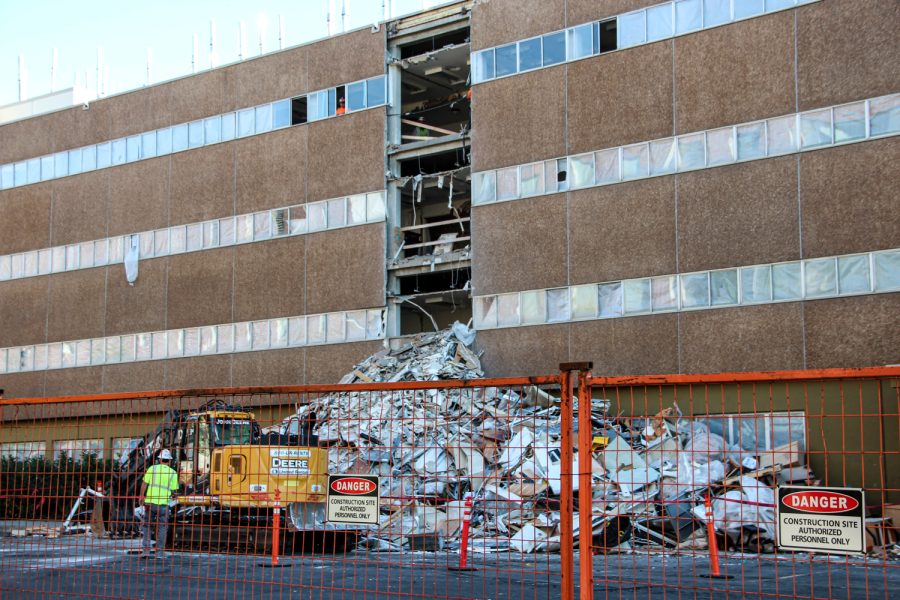Johnson Hall demolition just around the corner
WSU hopes new building will be operational by 2026; over 300 faculty, staff were redistributed to new facilities
Construction workers demolish Johnson Hall, Oct. 4.
October 5, 2022
WSU is set to complete its largest demolition project in its history with Johnson Hall, with the interior beginning in the fall and the exterior in the winter.
The hall, home to the United States Department of Agriculture and U.S. Agriculture research, will be demolished using robotic jackhammers, according to Pullman Radio.
Once the demolition process, which will cost $8 million, has concluded, a new government-funded building will take its place. The new building will be better suited for current-day agricultural research and will be fully equipped to handle ongoing and future research projects, according to a WSU press release.
Project manager, Cynthia Arbour said the most challenging aspect of the demolition thus far has been beginning the process of the demolition.
“The key thing was to get everyone out of the building,” Arbour said. “We had done so by renovating multiple floors of Clark and finding new homes for all faculty,”
It was not an easy transition for many of the faculty, however, people were really great about the decision to get rid of the building and worked well on moving out, she said.
Richard Koenig, chair of the Department of Crop and Soil Sciences, said with over 300 faculty and staff members needing to be moved, as well as the need for storage spaces for all current research, it has led to some less than ideal circumstances for current faculty that are conducting research.
“In the end, we had to distribute people over four buildings and everyone has to get by with less space as we wait on construction of the new building,” he said.
The difficulties that will be felt today lead to a more promising tomorrow, as by 2026, the new building is hoped to be fully constructed and operational for WSU, Koeing said.
With Johnson Hall being over 60 years old and being used by multiple generations of students and faculty, there was far less resistance than what could have been expected, Arbour said.
“There was not much protesting with the demolition, everyone recognizing that it needed to go, people were really great about it,” Arbour said.
It was a sentiment that was shared amongst the WSU staff as well.
“New, modern space will be welcome by all. Johnson was a large building but inefficiently designed, drafty and dirty,” Koeing said. “The age and state of Johnson made it hard to do modern science that often requires ultra clean conditions, good ventilation and temperature control, high-speed connections and collaborative shared spaces.”
Even with the anticipation for the new building and the more efficient research that will come with it, there will still be a feeling of loss with its demolition, Koeing said.
“There will be a sense of loss for many who spent the vast majority of their careers in Johnson Hall,” he said. “There were many incredible scientists and discoveries in that building. It holds a lot of fond memories and nostalgia for many of us.”
With the demolition having just commenced, it will be focused on the interior until December, however, beginning in December the exterior of the building will become an active sight with heavy machinery and potentially falling debris, Arbour said.
“Make sure students know that it will be an active demolition project from fall 2022 until March 2023, so it would be wise to be very careful when walking near the building,” she said.









